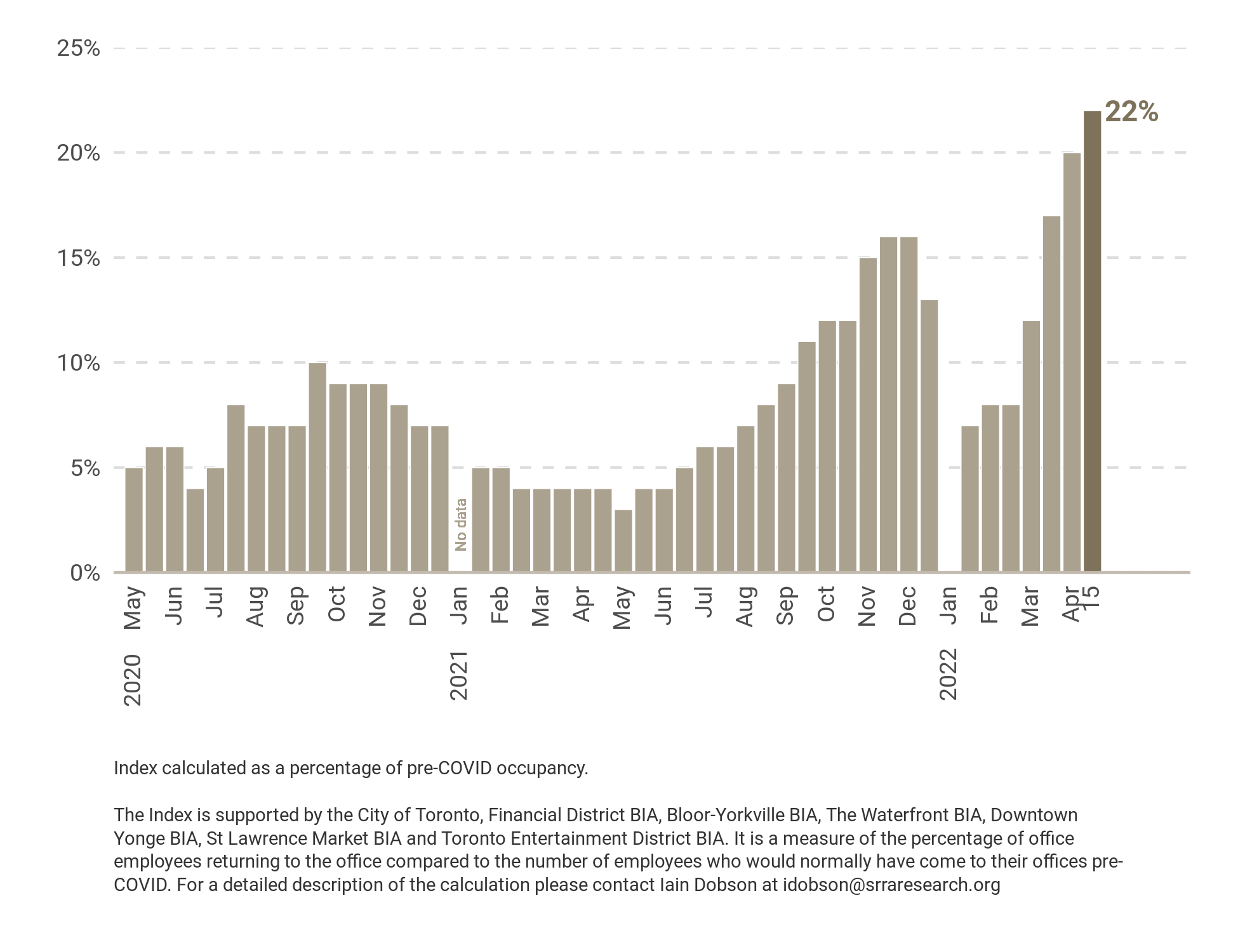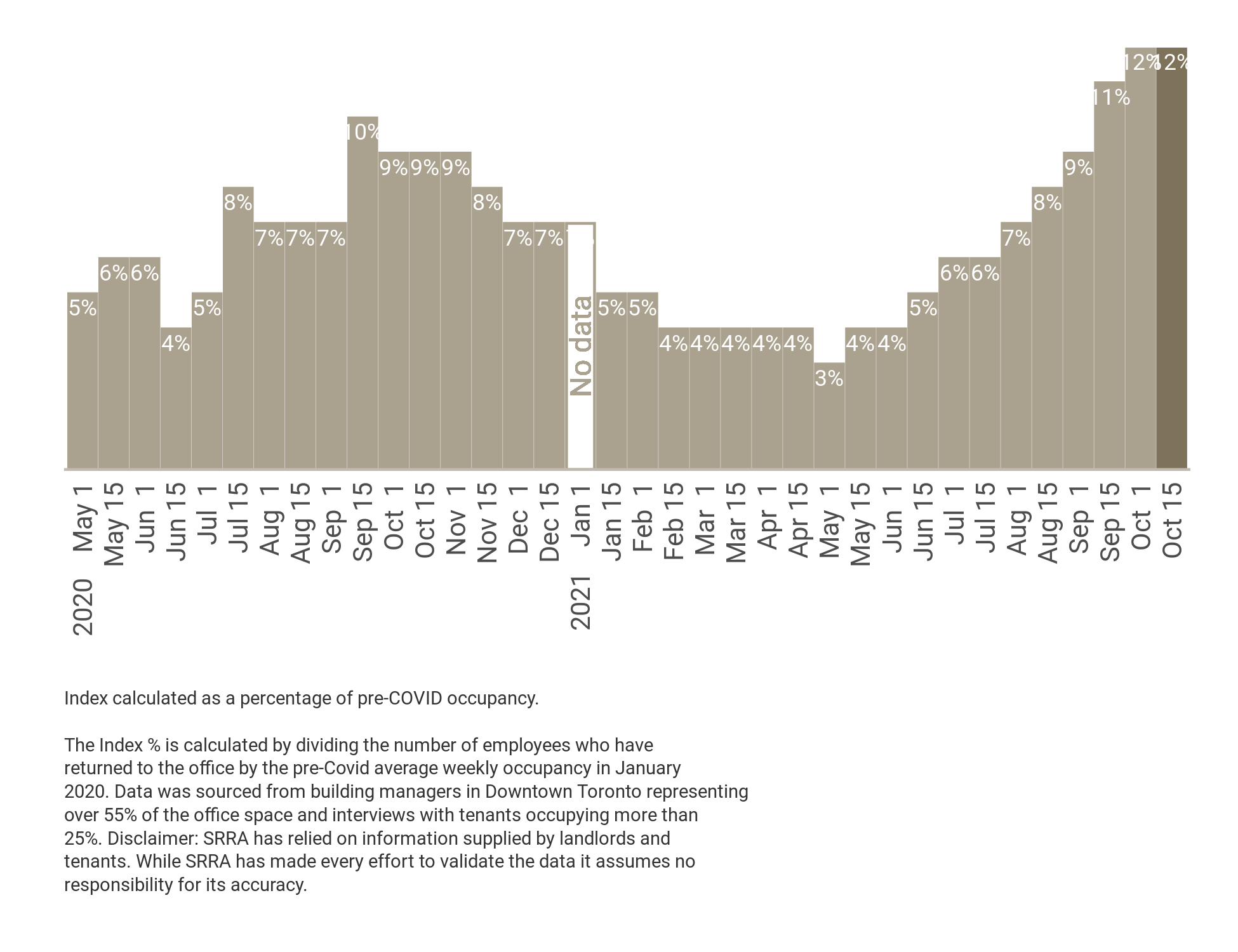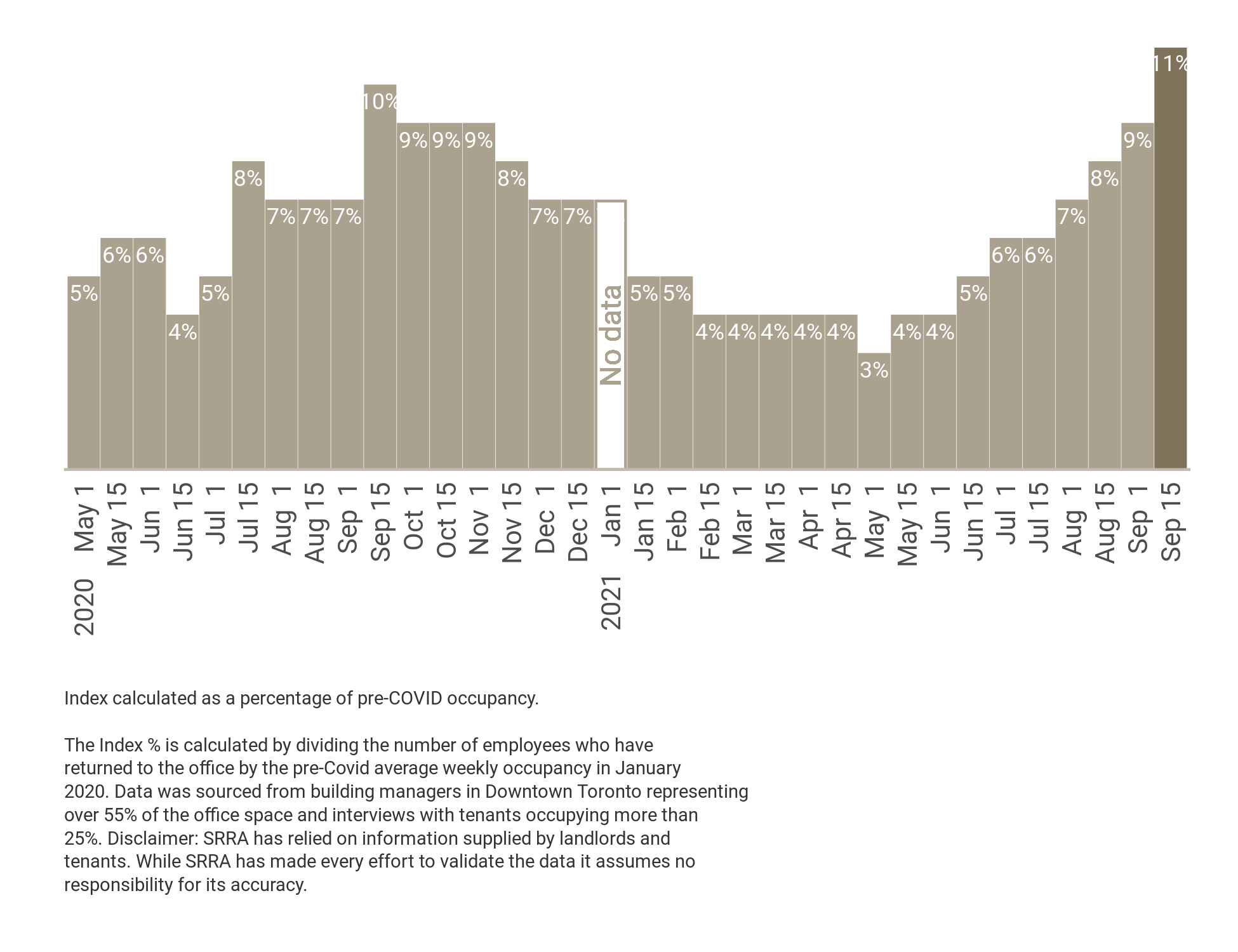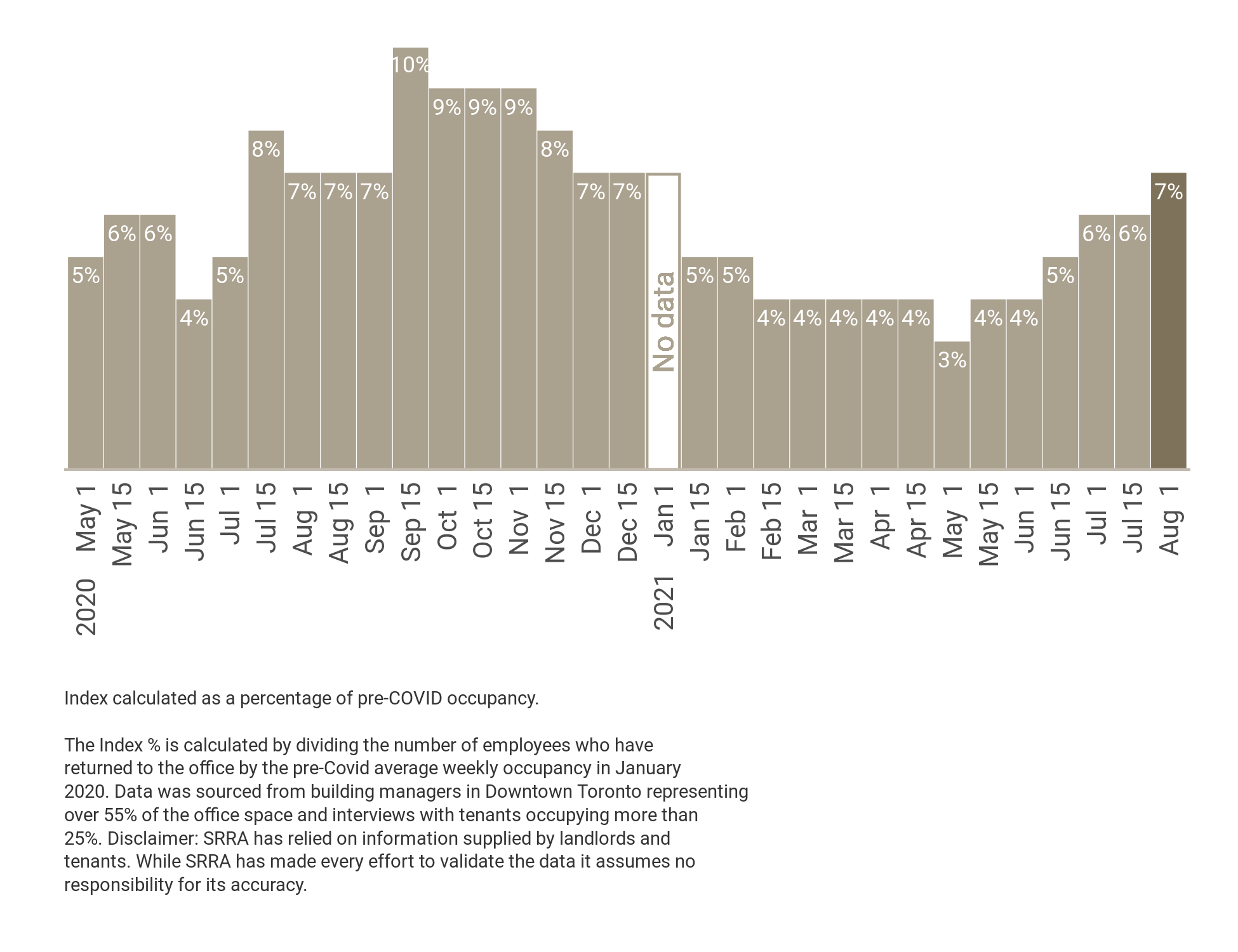Comments–
The significant voluntary return in April established an employee preference for a partial week centred on Tuesdays, Wednesdays, and Thursdays. There are several companies who are still below 5% and whose plans are focused on a back to the office strategy for September.
At the same time there are also companies who are already at 40% or greater normalized over a 5 day work week. From our recent interviews transit does not appear to be the most important consideration as it was earlier in the pandemic
Stay safe, your SRRA team.
Links to Articles of Interest
Dig beneath the headlines!
CBRE using post-pandemic uncertainty to trial an office designed for a hybrid world
Co-Working sites attracting attention from investors in U.S. and Canada
If nothing else, the tug between WFH and return to the office is giving opinion writers a bonanza!
“The Occupancy Index is supported by the City of Toronto, Financial District BIA, Bloor-Yorkville BIA, The Waterfront BIA, Downtown Yonge BIA, St Lawrence Market BIA and Toronto Entertainment District BIA. It is a measure of the percentage of office employees returning to the office compared to the number of employees who would normally have come to their offices pre-COVID. For a detailed description of the calculation please contact Iain Dobson at [email protected],”




















